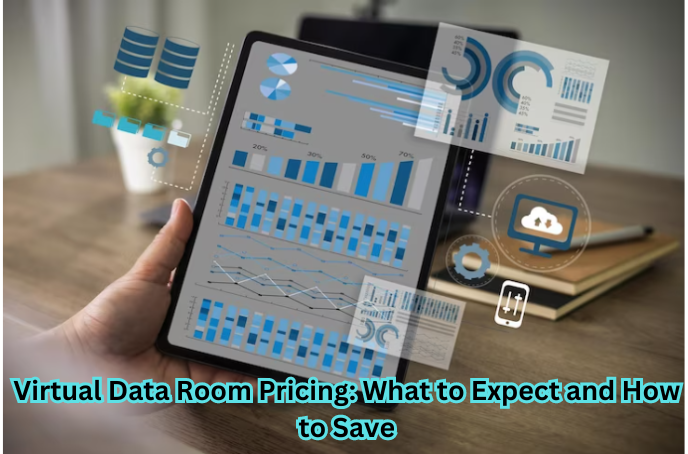You have entered the virtual data room prices world, where the expenses of protecting and overseeing confidential data can vary greatly. Businesses must grasp the complexities of Virtual Data Room (VDR) pricing as they depend increasingly on digital platforms for data storage and exchange. Learn more about virtual data room prices and smart tips to maximize your money with our in-depth guide.
Understanding Virtual Data Room Pricing: A Deep Dive
Ensure you understand the basics of pricing before looking for the perfect Virtual Data Room. Storage space, user rights, and additional functionality are common considerations that VDR companies utilize to establish their pricing strategies. To further understand, consider the following breakdown:
- Data Storage Capacity: Virtual data rooms (VDRs) are frequently charged according to the data storage capacity your company needs. Rent can range from cheap to expensive, so it’s important to figure out what you need before you pay for anything.
- User Permissions: Permissions for different user tiers could be additional. You may wind up spending more money if you require more granular control. Thoroughly evaluate the number of users and the functions they perform.
- Extra functions: Virtual data repository (VDR) providers go above and beyond by providing a range of functions, such as document tracking, enhanced security measures, and customer assistance, in addition to basic storage and access. To match your investment with your company’s needs, it is crucial to understand these extras.
Various Cost Models
Virtual data rooms often use various pricing models. It would be best to consider your company’s unique characteristics and data management plan requirements before deciding. Both options have their advantages and disadvantages.
- Pay-Per-User: This pricing model allows you to pay just for the users that access the virtual data room. It works well for companies with few users with different access needs.
- No-Contract Pricing: Some VDR services charge a set cost regardless of how many users or how much data is kept. Businesses that can anticipate their customers’ needs might benefit from this strategy.
- Usage-Based Pricing: This pricing model costs based on the quantity of data saved or the features used, making it ideal for enterprises with variable demands. It provides a degree of adaptability, but close cost monitoring is required.

“Discover cost-saving tips in our comprehensive guide on virtual data room pricing.”
Unveiling the Hidden Costs of Virtual Data Rooms: What to Anticipate from Pricing
Be cautious of hidden costs that could catch you unaware, even if most companies are upfront about their basic rates. Examples of typical offenders include charges for data overages, customer help outside of normal business hours, and extra security features. To keep from spending more than you planned, read the tiny print.
Bandwidth and Speed Considerations
Think about each provider’s speed and bandwidth restrictions when comparing VDR prices. Your capacity to swiftly exchange and access vital information might be compromised if some companies charge more for quicker data transmission speeds.
Enhancements to Security
You may be enticed by complex security settings, even though basic security safeguards are usually incorporated. Upgrades to encryption, granular access restrictions, and multi-factor authentication are all examples of such features, which may be expensive. Be cautious while prioritizing security.
Strategies to Save on Virtual Data Room Costs
By carefully assessing your company’s needs, you may avoid paying for things that aren’t essential. Get a feel for how much data you’ll need to keep, how many people will require access, and which features are mission-critical to your process. The basis for making cost-effective decisions is this understanding.
Be Forceful When Haggling
Typically, virtual data room providers are amenable to negotiations, particularly with bigger companies or contracts that span many years. Feel free to communicate your requirements, outline your budgetary limitations, and look for a tailored solution that complements your long-term objectives.
Take a Look at Trial Offers
Try out a few different Virtual Data Room services for free before you commit to one. You may try out the platform’s features, evaluate its user interface, and see whether it suits your needs without spending any money immediately.

Consider Alternatives
Although virtual disk repositories (VDRs) are widely used, more cost-effective alternatives, including cloud storage services, may provide the same level of security. By evaluating all the available possibilities, ensure you’re investing in a system that meets your budget and data management demands.
Finding Your Way Around the Varying Virtual Data Room Costs
Finally, there are many facets to Virtual Data Room price. However, with the right information and some strategic insights, you may make your way through it. Learn the ins and outs of various pricing schemes, be prepared for surprises, and use smart tactics to maximize your money.
The point is to get a Virtual Data Room that works well for your company’s goals, not the cheapest one. Your data management operations may be made more efficient and secure while you save money by assessing your needs, negotiating well, and looking into other options. Have fun looking for a virtual room!
FAQ
You have arrived at the Virtual Data Room price FAQ page. Businesses are turning to digital solutions for safe data management, but navigating the Virtual Data Rooms (VDRs) pricing environment may be difficult. In this detailed, frequently asked questions (FAQ) section, we will discuss Virtual Data Rooms (VDRs) and their features, pricing, and important factors to keep in mind. Virtual data room pricing might be complicated, but this guide can help anyone—from industry veterans to complete VDR newbies—understand the fundamentals. Shall we begin?
How much does the data room cost per page?
A typical data room’s monthly cost per page might be anywhere from $0.40 to $0.85. This price strategy works well for simpler projects with an obvious document count. However, some services charge a flat monthly rate, regardless of how many pages you use.
How much do data room providers charge?
Several variables affect data room pricing, such as:
- Count of uploaded pages: Document uploads determine the per-page model’s pricing.
- The user-based approach calculates fees based on the number of users who visit the data room.
- Discounts are typically available for extended commitments to monthly, quarterly, or yearly programs.
- Extra features: Premium features, such as analytics tools or Q&A modules, could cost more.
Why are virtual data rooms so expensive?
Data rooms are all about secure, centralized document management and communication, and they may simplify due diligence and complicated deals. Businesses may justify the investment with this value and features like audit trails and encryption.
How much is Box data room?
A data room solution is available within Box’s platform for as little as $10/month. The amount of users and the features required will determine the exact pricing.
What is page cost?
A data room provider’s “page cost” is the amount they charge each page. The processing and storage of submitted documents are covered.
How do I start a data room?
Usually, when you start a data room:
- When picking a data room provider, you must do your homework and evaluate several options according to your requirements and budget.
- Purchasing a subscription: Pick a package that works for the scope and features you need for your project.
- Authorized users with varying degrees of access can be added.
- Please put all your important papers in one place and safely upload them.
- Controls and permissions setup: alter who can see what documents and how they can access them.
What is the purpose of a virtual data room?
Secure document sharing and collaboration are made easier with virtual data rooms. They are useful for many things, such as:
- Disclosure of sensitive information to prospective purchasers as part of the due diligence process in mergers and acquisitions (M&A).
- Transferring ownership papers to a buyer, seller, or tenant is important to real estate transactions.
- I am keeping legal papers exchanged between parties safe throughout procedures.
- Sharing financial data and investor presentations with prospective backers is known as fundraising.
What is included in a data room?
Data rooms often contain the following documents, however, which can vary from project to project:
- Complete financial records, including audited financial accounts, income tax returns, and forecasts.
- Instruments of a legal nature: licenses, permits, contracts, and agreements.
- Advertising collateral: pamphlets, presentations, and product details.
- Corporate strategies, organizational diagrams, and risk evaluations are examples of operational documentation.
- Software requirements, product handbooks, and schematics are examples of technical documentation.
You can make smart choices for your company if you know how much data rooms cost and how often you use them.

